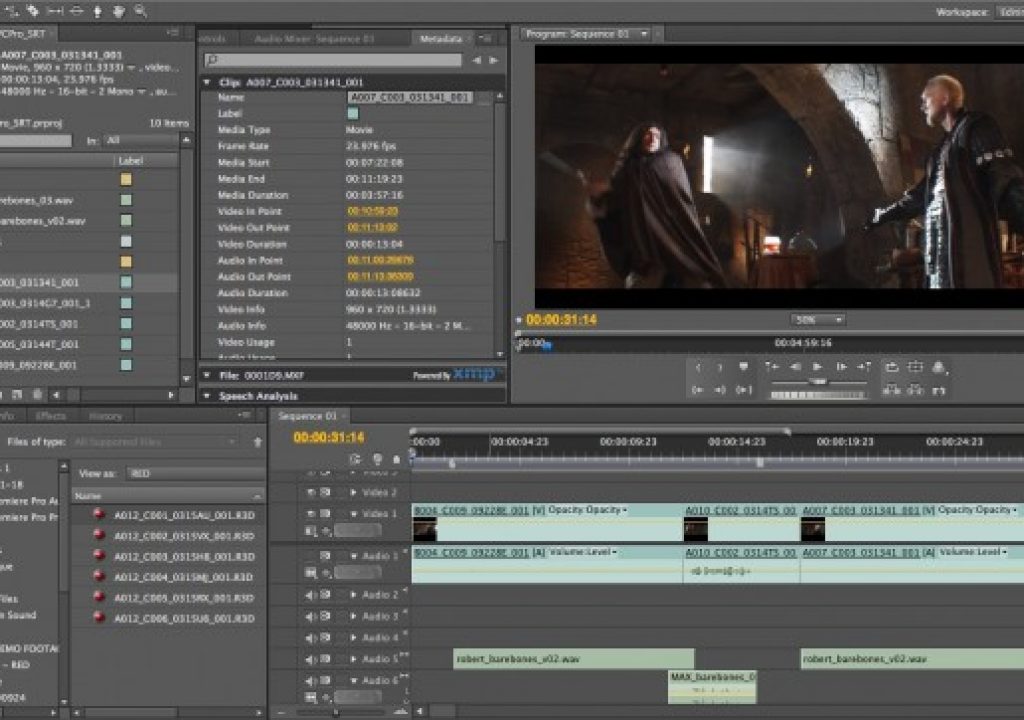
So it drives me insane when I try to delete a clip from a bin only to get a warning that it can’t be deleted because an instance or instances of it are being used in a sequence or sequences. In FCPX, you can just remove the keyword, clearing it from the collection. In FCP7, you can delete a clip from a bin without affecting any sequences. This is a huge problem for me because I frequently create temporary bins for copies of “maybe” clips or “unused” clips. My biggest gripe with the way master clips are handled is that you can’t delete a clip from a bin if an instance of it is being used in any sequences, unless you drop it from those sequences. There is definitely one thing this system prevents you from doing. There is no equivalent of FCPX’s excellent Timeline Index. You can’t attach effects, modify audio settings, or adjust edit points. Changing the name does not change the names of instances. I say “somewhat” because there isn’t much you can do with the master clip that actually takes advantage of the link.


When an “instance” of a master clip is added to a sequence, it stays somewhat linked to the master clip. Premiere clips are organized around the idea of “master clips.” A master clip is created for each imported source file. (It’s unfortunate that Apple chose to stick with those awful iMovie-style “Events”, but that’s a gripe for another list!)

Premiere can store plenty of metadata, but keyword collections make FCPX faster, more versatile, and better suited for file-based media when it comes to labeling and finding clips. My comfort with them is one of the reasons I made the move to Premiere, but the fact is that Final Cut Pro X (the primordial version of which was appropriately called “First Cut”) has jumped far ahead of Premiere when it comes to metadata-driven clip organization. I liked the physical bins during my film school Steenbeck days, and I liked the continuity of that paradigm in the first 7 versions of Final Cut. Keyword collections (or why deleting clips from bins shouldn’t remove instances from sequences).Fortunately for Adobe, Apple’s bizarre terminology alone (Events? Libraries? Projects within Events? What?) is enough to keep me crossing my fingers that Adobe can right the ship. When these problems occur, I find myself Googling “what’s new in FCPX” to see if Apple has rectified more of my original, deal-breaking gripes. It’s polite of Premiere to give the heads up that it’s about to crash, but it could at least be more specific. The first time you see the message that Premiere Pro has encountered “a serious error” and has to shut down, you assume from the tone that it is a rare circumstance and that emergency responders have been notified, but I have witnessed it many times across a variety of machines. They can’t seem to get anything right with merged clips, and even basic use of subclips continues to be a horrendous mess in CC 2014.1.Ĭrashes have been occurring less frequently with each release - but they are not uncommon. You expect new features to require refinements, but in Adobe’s rush to keep up with Apple’s innovations, Adobe has a tendency to tack on features that are not yet ready for prime time, some examples being automatic Auto Sync and Master Clip Effects. Just as disappointingly, it seems that whenever a new feature is added, it almost never works correctly out of the box.
#ADOBE PREMIERE PRO CC 2014 CHART FOR MAC#
Even though Premiere Pro for Mac had long existed when the FCP X launch debacle gave them an opportunity to get back in the game, Premiere Pro CC for Mac still runs like an app that was ported from a Windows version.
#ADOBE PREMIERE PRO CC 2014 CHART CODE#
Adobe has in fact been hard at work squashing bugs, but they really need to revamp the code from the ground up, at least for the Mac version. Improvements have certainly been made since I first started with Premiere Pro CS 5.5. Although I have listed a number of specific bugs in this list, I don’t have time to keep up with all the glitches that occur on a regular basis. To quote C-3P0, Premiere Pro CC is “not entirely stable,” and that is putting it mildly.


 0 kommentar(er)
0 kommentar(er)
